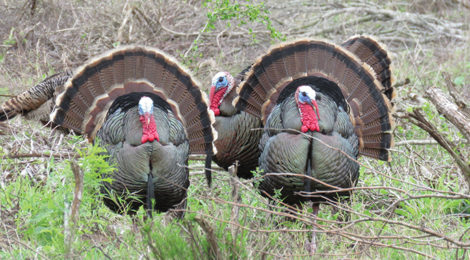
EARLY SEASON GOBBLER CHALLENGES
Proven spring season techniques and calling will lure in reluctant henned up “Toms.”
Story by Bill L. Olson
Texas Parks & Wildlife’s web page on turkey in Texas repeats an often stated observation amongst turkey hunters. It states, “if wild turkeys could smell, they’d be nearly impossible to hunt. The eyes and ears of a turkey make it one of the toughest of all Texas game animals. Their vision is the keenest among all game animals in the Lone Star State. They are especially astute at pinpointing movement and can hone in on noises from a mile away.”
In Texas a generous and lengthy spring season allows hunters the opportunity to be challenged in their pursuit of these birds. At the beginning of the season gobblers are anxious to breed and many times when conditions are right hunting can be difficult since gobblers are already with hens. During these times it is more difficult to lure a “Tom” away from a receptive hen with seductive yelps, putts, purrs and cuts made on box call, friction call or diaphragm.
Given the wet and fairly mild winter Texas has experienced, if weather forecasts are correct it looks as though we should have an early spring and one that should be conducive to a good spring hatch of turkey poults. Two years ago in 2017 a good hatch of poults added to the statewide population of Rio Grande and Eastern turkeys that are admittedly underutilized by hunters according to TPWD District Leaders. The hatch and survival of poults in 2018 was below average but there are plenty of mature gobblers that will test even the most experienced hunters this spring.
The challenge that awaits hunters pursuing long-beards during the early part of the season is how to call in a gobbler close enough to be taken with a shotgun or bow. Turkeys normally have started breeding prior to the opening of the season and will be at the peak of activity when legal shooting light shines on opening morning.







